For a time I felt like I was the only person in the world with fond memories of Brave Fencer Musashi. I love the silly voice overs, the colorful world, the whimsy. Most people, though, remember things like having to be at certain places at certain times and being forced to make jumps at disadvantageous camera angles. The reason most people got it was to play the packaged Final Fantasy VIII demo.
The main reason I decided to play it was to make a simple comparison between the Square of then and now. Musashi works as a very interesting time capsule. There isn't a scent of angst in this game. It's all silly as shit and very simplistic; no illusions of grandeur, no one talking about darkness or dreams and honor and memories. Looking back, Musashi was the fulcrum balancing the old Square and the new.
The evil Thirstquencher Empire descends upon the peaceful Allucaneet Kingdom. The royal advisers descend to the foundation of the palace along with Princess Fillet, so that they may summon their only hope - the legendary Brave Fencer Musashi. But when Fillet performs the procedure (called "HERO SUMMON"), they're greeted by a short, scrawny, gi-garbed, geta-wearing spiky-haired boy who has no God damn interest in dealing with shit that has nothing to do with him. Only once he's reminded by the royal steward that the Princess is his only hope of returning to his home world does he agree to secure the Legendary Sword of Luminescence and recover the Legendary Five Scrolls before Thirstquencher does.
Musashi is a cheeky little bastard, and who can blame him? He's a hostage in the world he's supposed to save. He treats all of the stuck-up or weird adults around him with minimal respect and often resorts to unprovoked name-calling. And the funny thing is that everyone seems to like him regardless.
And just think of how he treats his enemies! All of the members of the Thirstquencher Empire are verbose idiots, not unlike the people of Allucaneet, only they're also trying to kill him... Actually, now that I think of it, Musashi treats the bad guys pretty much the same way he treats the good guys, really, only he also beats the shit out of them. The main difference is that it's actually pretty cathartic seeing Musashi's aggressions turned against the guys who actually deserve it.
The cast is colorful and sweetly stupid, more likable then Musashi gives them credit for. They're excellently voiced in an overly exuberant Saturday morning cartoon fashion, some of the best and most fun voice acting in a Square game to this day, with casting provided out-of-house by Animaze. The characters were designed by Koji Matsuoka, a man who mysteriously has no other credits for doing anything else. More recognition went to Tetsuya Nomura, who did all of the official illustrations. Each character is used economically; for the most part Musashi has no more than three scripted encounters with any of them. Each of the members of Leader's Force - a Thirstquencher task force made up of three members, all of whom introduce themselves as its leader - are only met twice. The story moves at a pretty brisk pace as a result.
The outlier of this whole cast, though, is Musashi, the spiky-haired boy with a Sonic the Hedgehog-esque chip on his shoulder (even his homeworld rival Kojiro is a tightass jerk like the rest). I believe that Musashi represents the new Playstation-era Square looking back at where its come from. He's a Japanesely dressed warrior stuck in a land of European fantasy. Knights and empires might be cool for all the people that live around that stuff, but he's way over it. He's ready to beat the shit out of these walking cookie-cutter parodies, have some fun if he can, and then ship out, leaving behind this medieval cum steampunk world once and for all and explore new styles and new genres.
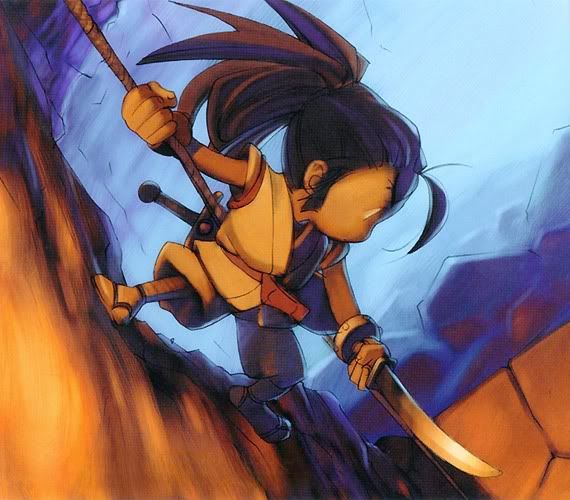
The entire first sequence of the game leading up to the end of the first boss fight is a really excellent episode. The kind of opening that Square RPGs are known so well for - Super Mario RPG's raid on Bowser's Keep, Final Fantasy VII's bombing mission, Vagrant Story's Greylands Incident, Final Fantasy IX's play and kidnapping - it's the kind of bite size video game level you would be happy to play by itself once in a while. It stands as a satisfying chunk of story on its own, it steadily unfolds the mechanics of the game and promptly rewards the player for their understanding, and it perfectly represents the world while still promising greater wonders beyond it.
Musashi sets out with a specific objective - get the Legendary Sword Lumina, bring it back, go home. The player is introduced to Fusion, the less legendary sword with which Musashi performs his most basic attack. Soon you discover that Fusion can -Assimilate- the abilities of an enemy, Kirby style, providing you with a new skill. The first area you can explore is nice and linear with a variety of enemies with which to practice Assimilation. You come to a stream with a makeshift drawbridge risen on the opposite side, and with a hint from Musashi you Assimilate a projectile attack from one of Thirstquencher's lackeys and shoot at the planks of the bridge, causing them to fall and letting you pass. With great relief you discover that puzzles in this game will be solved organically using actions that are already useful in their own right, not just by grabbing keys.
Musashi soon arrives at the tower that holds Lumina. Another training puzzle comes up, requiring you to use the same projectile ability, followed by a third puzzle that requires you to find a new ability that can be used to freeze enemies in place - whom you can use to depress a switch that lowers the force field around Lumina.
After obtaining Lumina, a giant stone head falls from the towers and rolls after a fleeing Musashi, down the side of the tower, down the forest path (when you realize that the useless boulders you passed by on the way to the tower are now serving as obstacles in your mad dash), all while Musashi frantically shouts at the player, "Whoa! JUMP!!" at the sight of pits and bumps, all the way to the palace, where Musashi finds Princess Fillet being held by Thirstquencher's Rootrick, a large and inexplicably Texan soldier, who tells Musashi that he's "gonna get a lickin'" before teleporting away with Fillet in tow.
The first boss fight which follows is a wonderful bout with a quadrapedal steam-powered war machine that starts in the great hall of the palace and sends you crashing through the wall out into the village as the monstrosity knocks over pillars and crushes houses like a huge dick. It's the first challenge that requires a combination of all the techniques using Fusion and Lumina that you've learned so far. Musashi ends the fight by tossing the mangled machine off of a cliff, shouting, "Hey! You forgot something!" and crushing it with its own wrecking ball. He then falls asleep where he stands, exhausted. The screen fades to black and you're prompted to save your game for the first time.
The excitement of discovery is sustained into the next chapter, when you first explore Grillin' Village. Half of the village is useless in a harmless sort of way, but all the NPCs have names, character portraits and daily activities. The shopkeeps have their own personalities and keep their own hours.
The pawn shop serves as one long running gag; seemingly valuable treasures that are discovered in dungeons await appraisal from the grumpy pawn shop owner, revealing them to be useless trash like pie tins and shovels, which you can then sell for a handful of dran. In a clever reversal, seemingly useless junk will turn out to be pieces of Legendary Armor once appraised.
From the village you can explore the rest of the kingdom. There aren't a great many locations, and they're not graphically astounding, but they are varied, colorful, and a few of the set pieces actually surprisingly striking. The dragon's head on Twin Peak Mountain, the eerily glowing underground lake, the great tree that contains all of the steam valves that keep the kingdom running...
Steamwood.
Pretty early on, Steamwood goes haywire, and the people of the village plead to you to fix it, because the guys that usually take care of it are useless I guess? After trotting through a forest path where pipes intertwine with trees, you reach Steamwood. To keep the whole thing from exploding, you must release the pressure valves, a mini-game that involves pressing the X button at the right time. Releasing each valve isn't difficult. The hard part is getting to each valve in the proper order before the valve timer (different from the "Game Over" timer) reaches 0.
Steamwood is made up of a circular catwalks with an elevator going up and down between the floors, and the camera is set low to follow Musashi - holding left or right for long enough will bring you in a circle. These catwalks don't have guardrails, though, and some of the direct routes to the valves are blocked by scalding columns of steam. Reaching the valves requires jumping onto pipes and support beams before landing on the catwalk again. The low camera angle makes it very difficult to make a direct landing, and landing on the curve of a pipe will cause Musashi to freeze, slide over the edge and fall off, leaving you to try and land on a lower platform or fall all the way to the bottom. If you can't reach the next valve again before the timer hits 0, you have to start again from the beginning.
Must people see their first Game Over screen at Steamwood. Most detractors of Brave Fencer Musashi cite Steamwood as the game's zenith of suck. I respectfully disagree: when Steamwood goes nuts a second time and you have to release all of the valves again, that might be worse.
While Steamwood is the most obvious example of a portion of the game in which a terrible environmental layout and damning camera angle act as a substitute for a challenge, it is not the last and certainly not the worst.
At the point-of-no-return before the final dungeon when you can't return to the village, Musashi reaches a rather gorgeous multi-tiered fountain floating high up in the sky. To reach the top of the fountain where the Fifth Scroll lies, you must utilize all of Lumina's elemental powers - earthquakes, flamethrowing, walking on water - and, of course, jumping.
At this point in the game, you've already figured out that after falling off-screen, Musashi takes damage and is teleported back to the last piece of "solid ground" he stood on - that excludes conveyor belts, mine carts, rotating platforms, etc. For some unfathomable reason, only a few portions of the fountain count as "solid ground". This means that, until you reach certain specified invisible checkpoints, you will have to start over from the beginning, which means having to go all the way back up to where you fell from before you even have a chance to make the jump again. I spent something like ten God damn minutes at this fountain. It's not the grandest locations in the game in terms of scale; it might even be the smallest.
The whole game isn't like this. Some dungeons are downright fun, even. The underground ruin has a wide enough variety of challenges to accept a couple of pitfalls, and the Frozen Palace is a beautifully designed, Zelda-esque locale. The best portion of the game is toward the end, the sequence before taking on the final leader of Leader's Force in a Dance Dance Revolution competition (You heard me). It's a giant courtyard filled with big, threatening enemies, the most powerful bad guys you meet, and Assimilating them grants you the most powerful abilities. It's really simple, nothing more than a few arenas strung together, but each combination of obstacles requires quickly refining your skills in crowd control, prioritizing threats and choosing the right attack for the right job.
It's a very spectacular sequence, especially considering the previous portion of the dungeon is one long boring puzzle that involves walking through a series of doors in the proper order, and starting over from the beginning if you mess it up. Steamwood rearing its ugly head again.
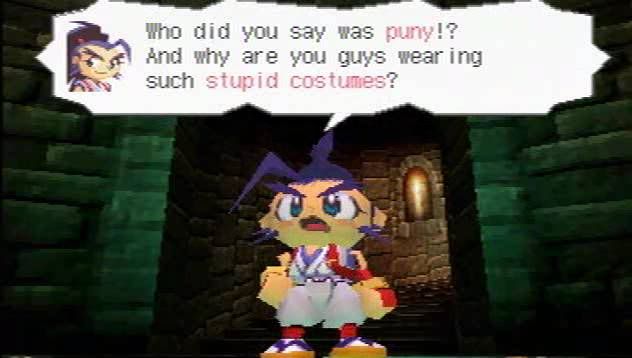
When I first started writing about Musashi before I finished it I planned on being way more positive and not getting hung up on how joyless jumping around is, but it's like a thick coffee ring right on top of it, I can't look past it, mostly because it doesn't make any sense. The beginning of the game has you fighting colorful henchmen and monsters with TWO SWORDS, using your foes' own talents against them, neutralizing them with elemental magic, doing things you would expect to be doing in a game called Brave Fencer Musashi. But then you have room after room in which the only button you touch is the one that makes Musashi jump.
In combat you have options with which to overcome your obstacles, and you gain more as you progress. All of these options are moot when a long drop is involved. You can't stab, cut or burn a pitfall. There aren't even bad guys around during these jumping sequences most of the time - probably because they thought it would be too infuriating to deal with falling and being attacking at the same time - so you're just alone in a room, falling off of ledges as many times as you care to, being teleported back onto solid ground, losing a sliver of HP at a time. Even the HP gauge starts to feel less like a measure of your ability to resist your attackers' onslaughts and more like a "how many times you can fall off of ledges" gauge. It's like a joke. Musashi has TWO SWORDS with which to cut down his aggressors, but I guarantee that you'll lose just as much of your HP falling off of things.
Going through dungeons with lots of jumping often made me second guess the fun parts of the game, if they were even that well-designed. Often they really are, the beginning and the end of the game being particularly swell, as well as most of the boss fights. But with some thought, a few dungeons are revealed to be merely mediocre, especially when you realize that you can get from one end to the other by simply running past most enemies. Restorative power-ups which were littered around early on in the game mysteriously disappear as the game progresses, and enemies drop them less frequently as well. Consistent Musashi ain't.
I went through most of the game before I was able to articulate why I wasn't having fun. Why? It could be that Tsuyoshi Sekito's fucking amazing soundtrack rendered me deaf to its problems. At 75 tracks over two discs, it's an unheard amount of work that's gone into a Square game's sound design outside of Final Fantasy. I can think of one dungeon that plays 6 different songs, a different one in each area. Soaring, epic, often triumphant, it's the kind of music that dares all actions that occur while it's playing to be of incredibile importance. Most songs are bombastic and self-important, like Musashi himself, with royal horns and Japanese wood blocks and all manner of instrumentation mixed up of East and West. It makes exciting moments feel absolutely exhilarating, and make boring parts seem like perfectly necessary interludes between the fun parts. I wish I knew more about music so I could explain how much I love this soundtrack properly.
That makes the final result exceedingly sad as a result. The song that plays during the credits is the perfect cap on what Brave Fencer Musashi was supposed to be, the end of an adventure but looking back, I feel like the music is almost too good for it. Looking at all of the fun and colorful art that comes up in the credits, I can't find any drawings of Steamwood. It feels like a lie. The credits adamantly insist to everyone that the game was exactly as fun as it promised to be, but every once in a while you catch it looking at you in a way that you know means, "If you tell your parents that I did anything to you, I will hurt you worse next time."
Did Square learn any lessons from Brave Fencer Musashi? They did allow its spiritual successor, Threads of Fate, to be published with improved control over jumping and far less pitfalls. It was also among a huge number of new IPs in a four year span across various genres. Its sense of humor would lay dormant until Final Fantasy IX, after which both humor and new ideas would be sealed away like some ancient evil. Neither would truly resurface until The World Ends With You eight years later. Four Heroes of Light would also echo Musashi's colorful world with simple visuals and a simple story, but it might not have been made without having "Final Fantasy" attached to it.
The main difference between then and now is that things were less homogeneous then and fans were more forgiving of a developer trying to branch out. Square's followers are more bitter now. Square was erroneously rewarded for the comforting familiarity of Advent Children and the Compilation of Final Fantasy VII, punished for exploring in Final Fantasy XII, both rewarded AND punished for Kingdom Hearts' sequels spin-offs, and rewarded and punished AGAIN for attempting to be familiar AND new with Final Fantasy XIII.
After all of these years, there are simply too many different expectations for what Square is supposed to be and what they are meant to do, and everyone believes that they must sift through these conflicting wishes and do what is best for everyone.
Square is like Musashi: a hero and a hostage. The best thing they can do is act take a cue from Musashi and fuck everyone. Do what needs to be done, but do it THEIR way. They have to take a risk, come from someplace real. In all of these years, Square has never really produced an auteur or a pioneer. No Kojima, no Cliff Bleszinski, not even a David Cage. And maybe they never will. But I'd still like to see Musashi come back. I'd be interested to see what he would have to say looking back on the time between now and his previous appearance.
Oh, wait. There already was a sequel.
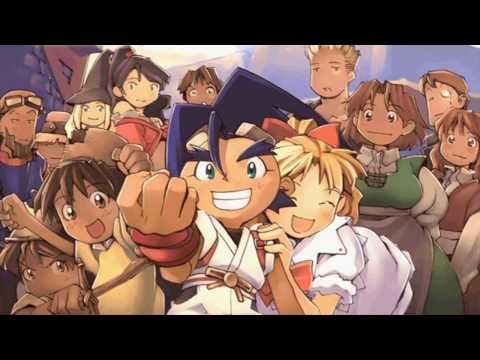
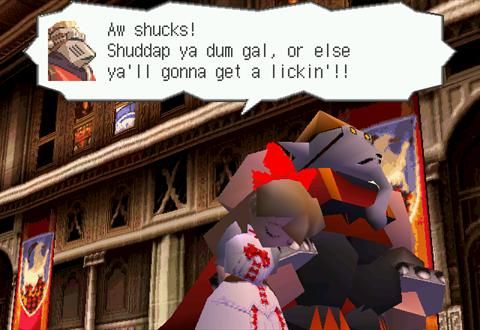
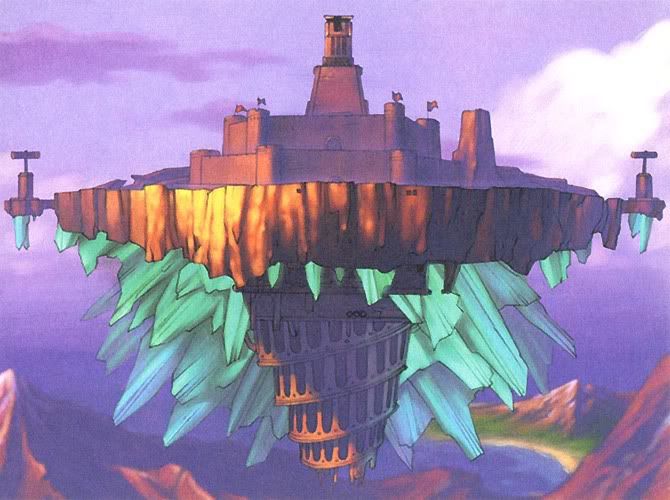
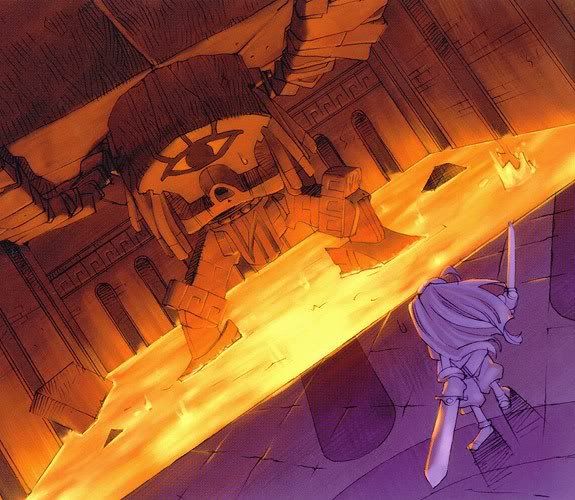
2 comments:
Samurai Legend Musashi was a joke. A purely action title that removed all the fun from Brave Fencer and left us with sluggish hack and slash through uninspired levels. I couldn't even finish it.
It's a little more than generous to call Cliffy B an autuer.
Just sayin.
Post a Comment